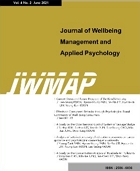 E-ISSN : 2586-6036
E-ISSN : 2586-6036
Won-mo GAL
Gyeong-eun BAE
Seung-yun HAN
In-seo KANG
Woo-sik LEE
Woo-Taeg KWON
Abstract
Purpose: Students spend long hours studying and living in school environments, making indoor air quality (IAQ) in school buildings a critical factor directly affecting their health and learning performance. This study aimed to assess the current status of IAQ in school buildings and analyze the effects of per capita occupancy volume, ventilation methods, and spatial characteristics on IAQ to propose improvement strategies. Measurements of particulate matter (PM10, PM2.5), carbon dioxide (CO₂), and total volatile organic compounds (TVOCs) were conducted in six locations, including classrooms and public spaces. The measured levels were compared to IAQ maintenance and recommended standards. Results indicated that particulate matter and TVOCs were within recommended levels across all locations. However, CO₂ exceeded recommended standards in classrooms with smaller per capita occupancy volumes, especially in enclosed classrooms relying solely on mechanical ventilation. Conversely, spaces incorporating natural ventilation showed relatively lower CO₂ concentrations. This study empirically analyzed various factors affecting IAQ in schools and provides practical ecommendations for improvement, such as enhancing ventilation systems, utilizing air-purifying plants, and installing CO₂ sensors. These findings are expected to contribute to the establishment of effective IAQ management policies and the creation of healthier learning environments.
- keywords
- Indoor AIr Quality, School building, Field Measurement, Carbon dioxide, Ventilation System
- Downloaded
- Viewed
- 0KCI Citations
- 0WOS Citations














